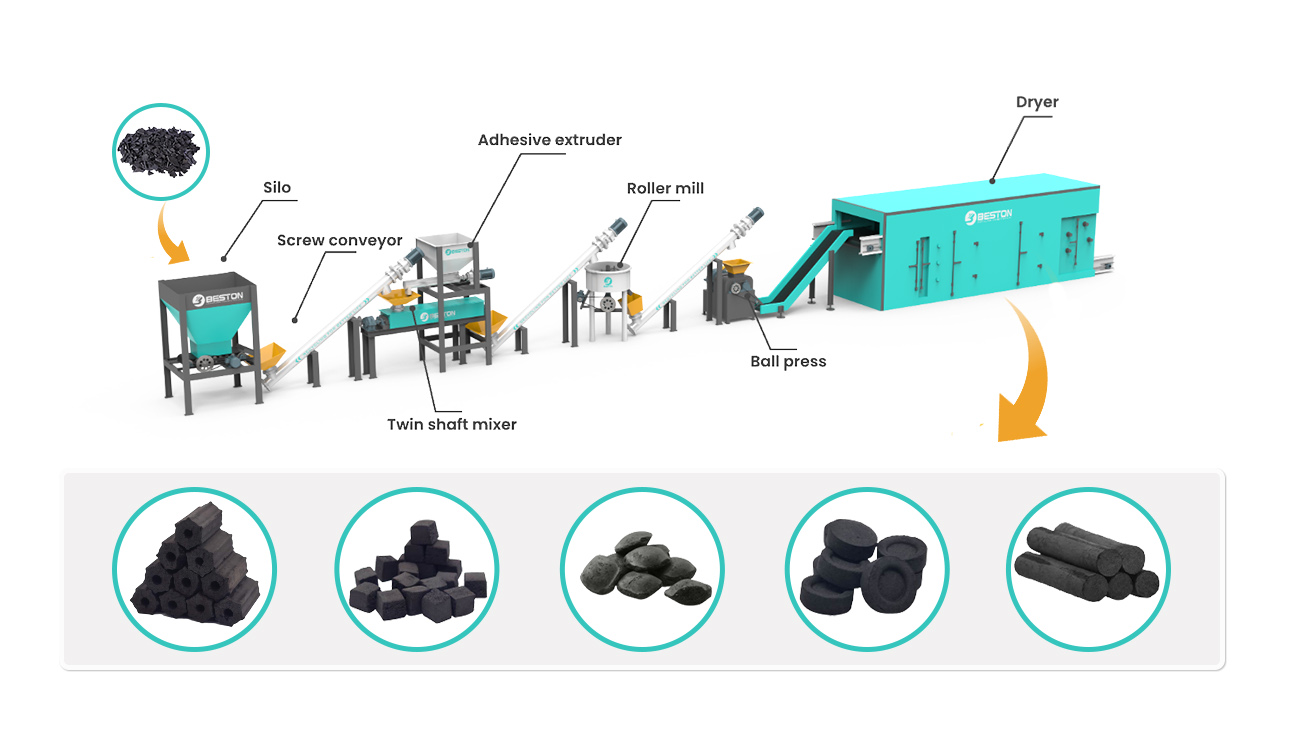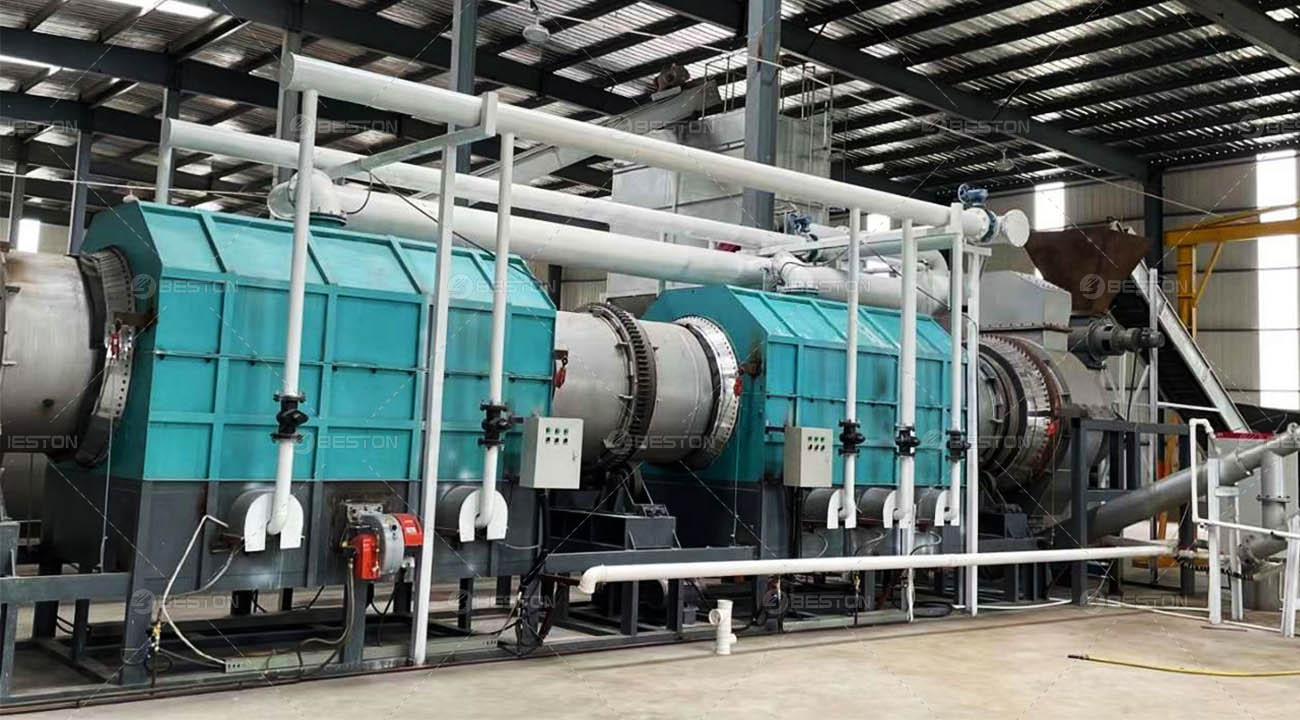Sawmill Wood Waste Recycling Methods: Pyrolysis
Sawmills produce significant amounts of wood waste, including sawdust, wood chips, and offcuts. Efficient recycling of these materials not only reduces environmental impact but also transforms waste into valuable products. One of the most effective methods for recycling sawmill waste is through pyrolysis. This process, which involves heating organic materials in the absence of oxygen, can convert wood waste into biochar, fuel gases, and liquids. A sawdust charcoal briquette machine plays a critical role in transforming sawdust into high-density briquettes, which are a valuable byproduct of pyrolysis.

Understanding Pyrolysis in Wood Waste Recycling
Pyrolysis is a thermochemical decomposition process that breaks down organic materials like wood at high temperatures, typically ranging from 300°C to 900°C, without oxygen. The absence of oxygen prevents combustion and allows the material to decompose into solid, liquid, and gas components. This process is ideal for recycling sawmill wood waste as it transforms sawdust and other wood residues into products that can be used for energy generation and soil enhancement.
The solid byproduct of pyrolysis, biochar, has numerous applications, particularly in agriculture, where it is used to enhance soil fertility and sequester carbon. Additionally, the gases and liquids produced during pyrolysis can be refined into biofuels, providing renewable energy sources.
Key Benefits of Pyrolysis for Sawmill Waste
1. Efficient Waste Utilization
Sawmills generate vast amounts of sawdust and wood shavings, often seen as low-value byproducts. Traditionally, these residues are either discarded or burned, contributing to environmental pollution. Pyrolysis offers a sustainable alternative by converting these wastes into valuable products like biochar and syngas. Utilizing a wood pyrolysis plant enhances the efficiency of the pyrolysis process by compressing loose sawdust into denser briquettes, making them easier to transport and process.
2. Energy Recovery
One of the primary advantages of pyrolysis is the recovery of energy from wood waste. During pyrolysis, volatile gases are released, which can be captured and used as a clean energy source. These gases can either be utilized within the pyrolysis system itself or sold as fuel for external industrial applications. The liquid fraction, often referred to as bio-oil, can also be refined and used as an alternative to traditional fossil fuels, offering a renewable energy source that further enhances the economic viability of sawmill waste recycling.
3. Carbon Sequestration through Biochar Production
Biochar, the solid product of pyrolysis, has unique properties that make it highly beneficial for agriculture. When applied to soils, biochar improves soil structure, enhances water retention, and increases nutrient availability to plants. Furthermore, biochar is an effective tool for carbon sequestration, as it locks carbon in a stable form that can remain in the soil for centuries. This contributes to reducing atmospheric CO₂ levels, offering an environmental advantage alongside the economic benefits of sawmill waste recycling.
The Role of the Sawdust Charcoal Briquette Machine
A sawdust charcoal briquette machine plays an essential role in the pyrolysis of sawmill waste. By compressing loose sawdust into solid briquettes, it optimizes the pyrolysis process by ensuring uniform feedstock density and size. This not only makes transportation and storage more efficient but also enhances the consistency of the pyrolysis process, leading to higher-quality biochar and other byproducts.
Briquettes produced from sawdust are highly combustible and energy-dense, making them ideal for energy production. The briquetting process also reduces the volume of the material, which is particularly useful for sawmills looking to reduce waste disposal costs and logistics challenges.
Advantages of Using a Sawdust Charcoal Briquette Machine
- Increased Energy Density: Briquetting increases the density of sawdust, making it more efficient for energy generation.
- Ease of Handling and Transport: Briquettes are easier to handle, store, and transport compared to loose sawdust, improving logistics and reducing costs.
- Consistent Pyrolysis Feedstock: Briquettes provide a uniform feedstock for pyrolysis, ensuring consistent heating and higher-quality outputs.
- Reduced Emissions: The briquetting process helps reduce dust and airborne particulates, lowering emissions during transportation and handling.
Economic Viability of Pyrolysis for Sawmills
Investing in pyrolysis technology offers sawmills a profitable way to manage wood waste. By converting sawdust and other residues into biochar, bio-oil, and syngas, sawmills can create additional revenue streams. The products of pyrolysis are in demand in various industries, including agriculture, energy production, and construction.
Furthermore, the integration of a sawdust charcoal briquette machine for sale adds economic value by enhancing the efficiency of waste utilization. The briquettes can be sold directly as fuel or used as input in the pyrolysis process. This not only reduces waste disposal costs but also increases the financial returns from sawmill operations.

Return on Investment (ROI)
While the initial investment in pyrolysis equipment and a briquetting machine can be substantial, the long-term financial benefits are clear. By converting low-value waste into high-demand products, sawmills can offset operational costs and generate additional income. The return on investment is further enhanced by the growing market for renewable energy and sustainable agricultural products.
Environmental Impact
Sawmill wood waste recycling through pyrolysis significantly reduces the environmental footprint of the lumber industry. By diverting wood waste from landfills and reducing the need for open-air burning, pyrolysis mitigates air pollution and greenhouse gas emissions. The production of biochar also contributes to carbon sequestration, further enhancing the environmental benefits of this recycling method.
In regions where deforestation and waste management are pressing concerns, the adoption of pyrolysis technology can play a crucial role in promoting sustainable forestry practices. By recycling sawmill waste into valuable products, pyrolysis supports a circular economy and reduces the ecological impact of timber harvesting.
Conclusion
Pyrolysis is a powerful method for recycling sawmill wood waste, offering both economic and environmental benefits. By converting sawdust into biochar, fuel gases, and bio-oil, pyrolysis transforms what was once waste into valuable resources. The use of a sawdust charcoal briquette machine enhances this process, increasing efficiency and product quality. As demand for renewable energy and sustainable products grows, sawmills can capitalize on pyrolysis technology to turn waste into profit while reducing their environmental impact. For more waste wood recycling solutions, please contact Beston Group Co., Ltd.